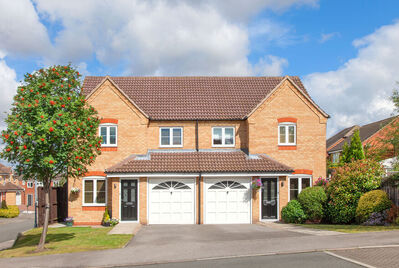
Through 2021, we’re taking you through the alphabet of property-related terms, explaining what they are and how they’re relevant to you, as a landlord. This month:
Capital
In property investment, ‘capital’ appears in a number of key terms:
- Capital value: This is the market value of the property, as confirmed by a surveyor.
- Capital return: This is the return on your investment in the property. To calculate your annual capital return, take your annual rental profit plus any increase in capital value over the year, divided by the amount of capital you’ve invested, e.g. deposit & refurbishment outlay. This will give you a percentage return. You can then track how well your property performs over time and compare the return you’re getting on your money with the returns available from other types of investment.
- Capital improvements: These are upgrades or enhancements that increase the capital value of your buy to let, such as a loft conversion, extension or significant refurbishment. If you’ve spent money on capital improvements, it could reduce the impact of Capital Gains Tax (CGT).
- Capital gains: This is the difference between the value of the property when you bought it and the value today. When you sell or dispose of the property in another way, this amount is liable to CGT. If you have refinanced at any point to release equity, it’s important to realise that when you sell, the gain will be a higher amount than the remaining equity. It’s worth working with a specialist property tax adviser, who can help you to plan ahead and make sure you understand how much tax you might have to pay and when.
Deposit
As a landlord, there are two types of deposit you need to know about. The first is the deposit required by your lender if you’re taking out a buy-to-let mortgage. The minimum deposit required is generally higher for buy-to-let than for a standard residential mortgage because the risk is considered greater. If you’re an accidental landlord and looking to switch a mortgage on a property to a buy-to-let product, be aware that if there is currently a high loan to value, you may need to invest some extra deposit funds before you can legally let.
The second type of deposit is the security deposit taken from your tenant. Although there is no legal requirement for you to take one, it’s highly advisable, so that if the tenant causes any damage or defaults on their rent, you have some cover. There’s no set amount, but it’s usually at least four weeks’ rent and capped at five weeks for rents under £50,000 per year. Over that annual amount, you can take the equivalent of up to six weeks’ rent. When you take a deposit, there are some important things to know:
- You must protect the deposit in one of the government-approved schemes within 30 days of receiving it.
- Within 30 days, you must also provide your tenant with specific information, including details of the scheme within which the deposit is protected and how to apply to get it back at the end of the tenancy.
If you fail to do either of these things, your tenant can apply to the courts and they may order you to either protect the deposit or repay your tenants up to three times the amount of the deposit. You may also be unable to evict your tenant if you need or want to.
There is also the option of accepting tenants via the Zero Deposit scheme – see our full article on the benefits.
The Reeds Rains Content Marketing Team



